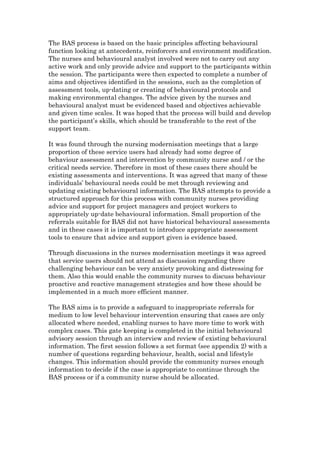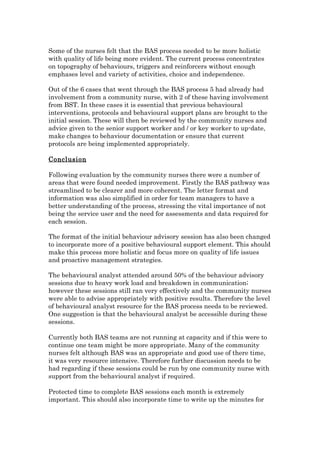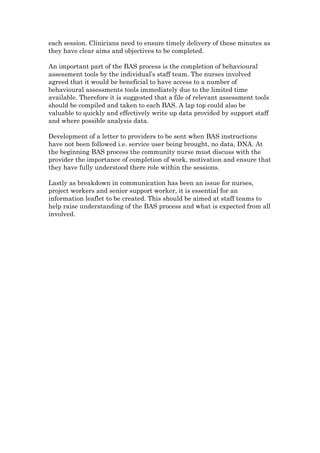The behavioural advisory sessions (BAS) were developed to reduce the community nursing waiting list and gatekeep referrals for behavioural support. The BAS provides structured monthly sessions for supported living staff to receive advice and support from nurses and analysts regarding residents' low-level behavioural issues. An evaluation found the BAS reduced the waiting list to zero and mostly had positive impacts, though some providers were unprepared and failed to fully engage. The BAS process could be improved with better preparation of providers and more protected nursing time.






